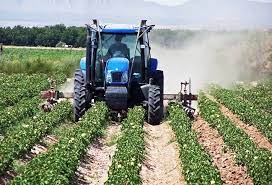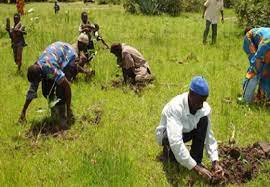A Professor at the Department of Soil Science, Ahmadu Bello University, Zaria, Odunze Azubuike Chidowe, has called for the adoption of climate-smart agricultural technology in the country.
Prof Chidowe said the technology will enhance and sustainably increase agricultural productivity and income, adapting and building resilience to climate change, while also reducing and/or removing greenhouse gas emissions where possible.
The soil experts made the call in a paper titled: “Climate-Smart Agricultural Technologies for Profitable Farming,” in Abuja recently, saying Climate-Smart Agriculture (CSA) will enable farmers to produce more with less, since CSA is an integrated approach to managing landscapes—cropland, livestock, forests and fisheries–that address the interlinked challenges of food security and climate change.
According to Chidowe, CSA aims to simultaneously achieve three outcomes: Increased productivity: Produce more food to improve food and nutrition security and boost the incomes of 75 percent of the world’s poor who live in rural areas and mainly rely on agriculture for their livelihoods.
“It will help to sustainably increase agricultural productivity and incomes from crops, livestock and fish, without having a negative impact on the environment. This, in turn, will raise food and nutritional security.
“A key concept related to raising productivity is sustainable intensification, enhanced resilience: reduce vulnerability to drought, pests, disease and other shocks; and improve capacity to adapt and grow in the face of longer-term stresses like shortened seasons and erratic weather patterns.
“CSA will reduce the exposure of farmers to short-term risks, while also strengthening their resilience by building their capacity to adapt and prosper in the face of shocks and longer-term stresses. Particular attention is given to protecting the ecosystem services which ecosystems provide to farmers and others,” he explained.
He said the services were essential for maintaining productivity and farmers’ ability to adapt to climate changes reduced emissions: pursue lower emissions for each calorie or kilo of food produced, avoid deforestation from agriculture and identify ways to suck carbon out of the atmosphere.
“Wherever and whenever possible, CSA should help to reduce and/or remove greenhouse gas (GHG) emissions.
“This implies that we reduce emissions for each calorie or kilo of food, fibre and fuel that we produce and that we avoid deforestation from agriculture.
“Also, we manage soils and trees in ways that maximizes their potential to acts as carbon sinks and absorb CO2 from the atmosphere.
“Building on existing knowledge of technologies and principles of sustainable agriculture, CSA is distinct in several ways. First, it has an explicit focus on addressing climate change. Second, CSA systematically considers the synergies and tradeoffs that exist between productivity, adaptation and mitigation.
“Finally, CSA aims to capture new funding opportunities to close the deficit in investment. Climate-Smart Agriculture (CSA) therefore, is an approach that helps to guide actions needed to transform and reorient agricultural systems to effectively support development and ensure food security in a changing climate,” he said.
He explained that the CSA will help maintain ecosystems services, and will have multiple entry points at different levels; and it should not be perceived as a set of practices and technologies.
“It has multiple entry points, ranging from the development of technologies and practices to the elaboration of climate change models and scenarios, information technologies, insurance schemes, value chains and the strengthening of institutional and political enabling environments. As such, it goes beyond single technologies at the farm level and includes the integration of multiple interventions at the food system, landscape, value chain or policy level.
“CSA engages women and marginalized groups: To achieve food security goals and enhance resilience, CSA approaches must involve the poorest and most vulnerable groups. These groups often live on marginal lands which are most vulnerable to climate events like drought and floods. Gender is another central aspect of CSA. Women typically have less access and legal right to the land which they farm, or to other productive and economic resources which could help build their adaptive capacity to cope with events like droughts and floods,” he said.



